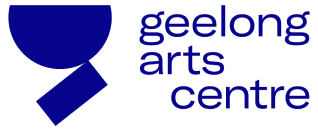The global COVID-19 pandemic has had a significant and devastating effect on the cultural sector, with many artists experiencing hardship and loss of income. Economic indicators predict that the cultural sector will be one of the most affected, and probably one of the slowest to recover.
The “Spatially Intelligent Arts Centre” project has been developed in close collaboration with Geelong Arts Centre to respond to some of the most pressing challenges faced by cultural institutions today:
• How to stay relevant in the age of digital technology?
• How to attract and increase the number of diverse audiences?
The project team’s highly mission-oriented design research aimed to address the key question: how can we change the agency of an Arts Centre Building from a static physical enclosure to a dynamic and intelligent place? The ambition to translate an Arts Centre Building into an “intelligent” place, that would enhance both the operational and the experiential dimensions of the building, has led to our project team winning a government grant in 2021 from Creative Victoria to start developing a spatially intelligent building framework for the Geelong Arts Centre (GAC), with first phase focusing on research, design, development and testing through scaled prototypes in the actual spaces of the existing building on Ryrie Street.
The project encompasses research, ideation, and the design and development of a number of “proof of concept” prototype applications. These applications specifically focused on improving the human-building interaction through: 1) Interactive engagement, 2) intelligent navigation, and 3) user/location specific content activation. The end goal of this work was to develop a series of intelligent and innovative engagement scenarios and applications between the building and its users (including visitors, staff, and managers) to improve the overall spatial, physical and social experience of the visitors.
Various ideas have been iteratively developed, tried, and tested, and a critical input to this work has been the feedback we have received from the GAC staff through various workshops and interviews. The decision with regards to the selection of the ideas to progress into the next stage for further development has been guided by the “Building as a living organism” concept. The development and further elaboration of the concept was a real breakthrough for the project, and it helped identify the specific features of 5 unique installations. Each installation has been designed and developed with the intention of creating a unique user journey.
